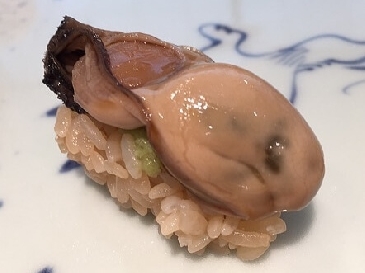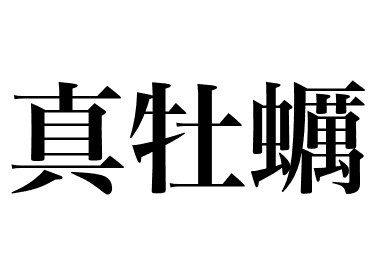Shellfish


Japanese oyster (Kaki)
【Nigiri sushi: Kai】
What is Kaki?
Kaki (Japanese oyster) is widely distributed in Japan south of Sakhalin and China. Its shell length is about 5 to 8 cm. Its external shape is not constant because it lives attached to reefs, but it is usually irregularly long and triangular. The season is from fall to winter, when the amount of glycogen is at its highest and the taste is even more delicious.
The main production areas are Hiroshima, Miyagi, and Iwate prefectures, and the size and color vary depending on the production area. Hiroshima-grown ones are large and milky white. Those from Miyagi and Iwate are medium-sized and bluish-black.
Kaki is Known for its characteristic smooth texture with a thick taste and fragrance. An experienced chef provides accurate pressure for rolling the fish, without crushing the juicy meat.
It was not until the latter half of the Showa period that Edomae sushi restaurants began to use oysters. One of the various seafoods they began to use was oysters. Oysters are too watery to be made into nigiri and make the sushi rice sticky. So, one method is to lightly heat and dehydrate them to balance with the sushi rice.
The reason oysters have gained popularity as a sushi topping is that it is said that the active ingredients in oysters are good for health. For example, glycogen is nourishing and can help prevent arthritis. They also contain minerals such as iron, manganese and copper as well as vitamins B1, B2 and B12, contributing to a therapeutic diet. Furthermore, zinc is effective in improving and preventing taste disorders. Finally, taurine can help improve liver function.
Scientific name: Magallana gigas
【Related contents】
Is the combination of Chablis wine and Japanese oysters match made in heaven?
The general rule is to only eat oysters in months that contain the letter “R”.
What is Venerupin?
List of Shellfish (Kai)
(Revision date: December 28, 2023)
Main production area
Hiroshima Miyagi Mie Hokkaido
Famous production area
Akkeshi Matoya Senposhi Lake mokoto
Season
Winter

